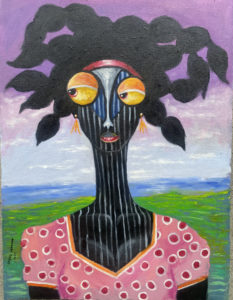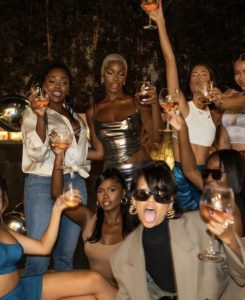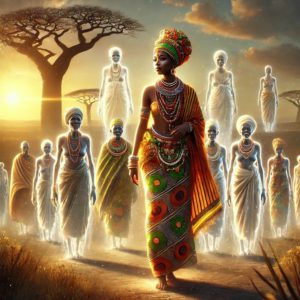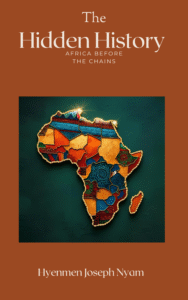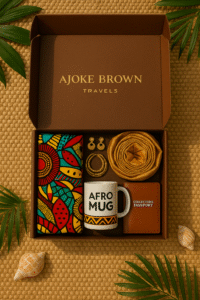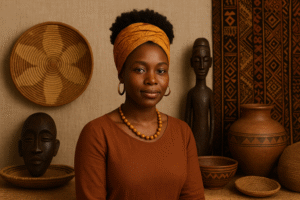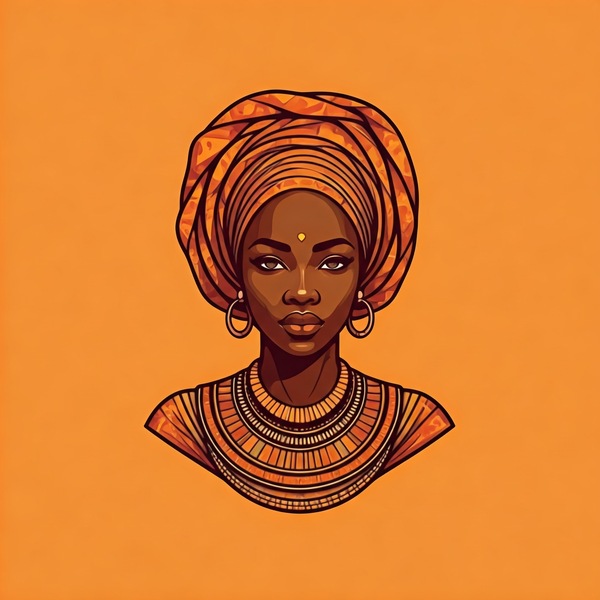Symbolism, Spirituality, and Function in African Art
At the heart of most traditional African art lies a deep spiritual conviction. Art objects are not simply representations of deities or spirits; they are often believed to be vessels or conduits for these forces.
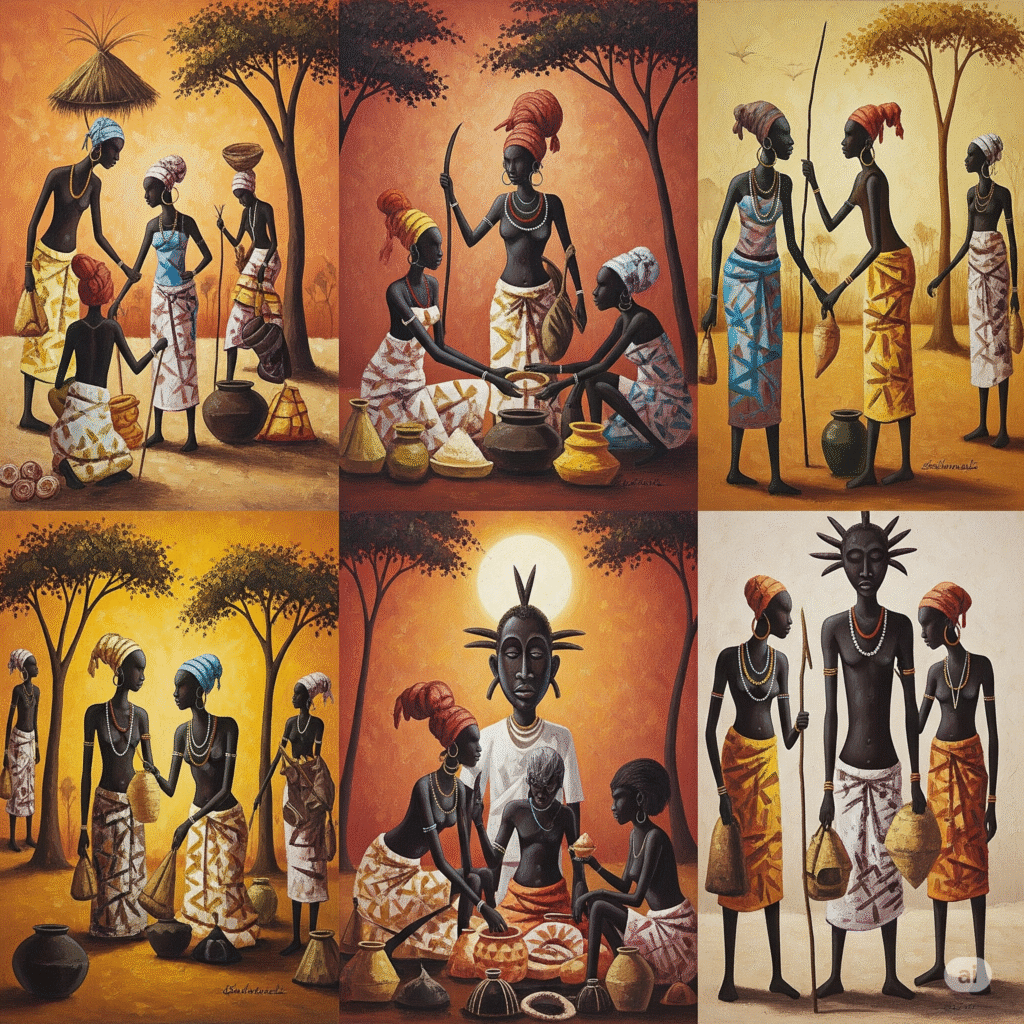
To view traditional African art merely as beautiful objects is to miss its most profound essence. Unlike Western art, which often prioritizes aesthetic contemplation and individual expression, African art is fundamentally functional and deeply embedded in the spiritual, social, and political fabric of the communities that create it. Every line, every shape, every material choice, and every ritualistic use is laden with meaning, serving to bridge the visible world with the unseen, reinforce societal norms, and maintain cosmic balance.
The Spiritual Nexus and Connecting Worlds
At the heart of most traditional African art lies a deep spiritual conviction. Art objects are not simply representations of deities or spirits; they are often believed to be vessels or conduits for these forces.
Ancestral Veneration: A cornerstone of many African belief systems is the profound respect for ancestors. Art serves as a vital link to the deceased, who are believed to continue influencing the lives of the living.
Reliquary Figures: The Fang Byeri figures of Gabon, for instance, were placed atop containers holding the bones of ancestors. These sculptures, with their serene yet powerful expressions, served as guardians, imbued with the spiritual essence of the ancestors to protect the living and mediate communication.
Commemorative Heads: The bronze and terracotta heads of Ife and Benin are not just portraits but also served as focal points for ancestor veneration on royal altars, embodying the spiritual continuity of the kingship.
Deities and Spirits: Art gives form to the myriad gods, nature spirits, and mythological beings that populate African cosmologies.
Yoruba Orisha Figures: Among the Yoruba of Nigeria, carved wooden figures represent Orisha (deities associated with natural forces, human endeavors, and specific destinies). These figures are housed in shrines, activated through rituals, and serve as points of contact for devotees seeking guidance, healing, or intervention.
Dogon Nommo Figures: The Dogon people of Mali create stylized wooden figures representing Nommo, their primordial ancestors and water spirits, central to their creation myths and vital for bringing rain and fertility.
Healing and Protection: Many art objects are created to actively engage with spiritual forces for well-being.
Kongo Nkisi Nkondi Figures: These famous wooden “power figures” from the Kongo region (DR Congo, Angola) are perhaps the most striking example. Nails, blades, and other objects are driven into their surfaces to activate them for specific purposes—to seal agreements, to punish wrongdoers, or to heal the sick. Each insertion marks a vow or a completed task, turning the the figure into a living archive of spiritual actions.
Masks in Healing Rituals: In various cultures, specific masks worn by diviners or healers are believed to embody spirits that diagnose illnesses, drive away malevolent forces, or restore balance to the community.
Symbolism,A Language of Forms and Colors
African art is rich in symbolism, where every visual element communicates specific meanings, often understood only by initiates or within particular cultural contexts.
Color Symbolism: Colors are rarely chosen for mere aesthetic appeal; they carry profound symbolic weight.
White: Often associated with purity, spirituality, ancestors, and death.
Red: Can signify life, vitality, passion, danger, or war.
Black: May represent the earth, the unseen, mystery, or maturity.
Blue: Linked to the heavens, wisdom, and royalty.
Yellow/Gold: Symbolizes wealth, fertility, and prosperity.
The combination and placement of colors can create complex symbolic narratives, as seen in elaborate beadwork, textiles like Kente cloth (Ashanti), and body painting.
Animal Symbolism: Animals are frequently depicted in art, embodying specific qualities or spirits.
Leopard: Power, authority, royalty (e.g., Benin Bronzes).
Python/Serpent: Wisdom, transformation, continuity (e.g., Igbo-Ukwu bronzes, Fon art).
Elephant: Strength, wisdom, longevity.
Antelope (e.g., Bamana Chiwara headdresses): Represents agricultural fertility, hard work, and the mythical being that taught humans how to cultivate land.
Human Features and Body Parts: Stylized or exaggerated features carry meaning.
Large Heads: Often signify wisdom, destiny, or the seat of identity (e.g., many West African masks and figures).
Bulging Bellies: Can denote pregnancy, fertility, or prosperity (e.g., Luba figures, Bamana figures).
Elongated Limbs/Necks: May represent elegance, spiritual aspiration, or connection to the divine.
Scarification: Patterns on figures often replicate real-life scarification, indicating ethnic identity, status, beauty, or initiation into specific societies.
Abstract and Geometric Patterns: Beyond figural representation, abstract patterns hold specific cultural significance. In Adire cloth (Yoruba), for example, geometric motifs and repeated patterns can convey proverbs, historical events, or social commentary.
Art in Action
The “use” of African art is paramount. Objects gain their power and meaning through their activation within specific social and ritualistic contexts.
Ritual and Ceremony: This is arguably the most common function. Artworks are not static museum pieces; they are dynamic participants in ceremonies:
Masks: Worn by dancers and performers in initiations, funerals, harvest festivals, and judicial proceedings. The mask, combined with the costume, music, and dance, transforms the wearer into the spirit or entity it represents, making the invisible visible and active within the community. Examples include the Senufo Kpelie masks, Baule Goli masks, and Mende Sowei masks (worn by women, unique in West Africa).
Figures: Placed on altars, used in divination, or carried in processions to invoke blessings, ward off evil, or facilitate communication with spiritual forces.
Social and Political Authority: Art serves to legitimize power, establish hierarchy, and document lineage.
Royal Regalia: Thrones (e.g., Ashanti Golden Stool), staffs, crowns, and prestige objects (e.g., Benin Bronzes, Kuba textiles) are not just symbols of authority but are often believed to embody the power of the ruler and the history of the kingdom.
Secret Societies: Many societies (e.g., Poro, Sande) use specific art objects, masks, and costumes to enforce laws, transmit cultural knowledge, and maintain social order.
Education and Initiation: Art plays a critical role in rites of passage, guiding individuals through life stages.
Initiation Figures: During initiations into adulthood, objects like the Bamana Ndomo masks (used in male initiation societies) or figures representing ancestors teach moral values, communal responsibilities, and spiritual knowledge.
Oral Tradition and Memory Aids: The Luba Lukasa (memory boards) demonstrate how art can be a powerful tool for preserving and transmitting complex oral histories, genealogies, and cultural narratives.
Utilitarian Objects with Aesthetic Value: The distinction between “art” and “craft” often doesn’t exist in traditional African contexts. Everyday items are frequently imbued with aesthetic beauty and symbolic meaning.
Headrests, stools, combs, containers: These objects are often intricately carved, reflecting the belief that all aspects of life, even mundane ones, should be approached with aesthetic sensitivity and cultural significance.
A Dynamic Legacy
Traditional African art transcends mere visual appeal. It is a living, breathing testament to complex spiritualties, intricate social structures, and profound philosophical insights. By understanding its symbolism, its deep connection to the spiritual realm, and its diverse functions within communities, we gain a much richer appreciation for its ingenuity and enduring power. This functional and symbolic depth is precisely what gives traditional African art its timeless relevance and continues to inspire contemporary artists both on the continent and across the globe.

